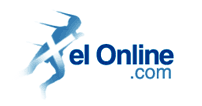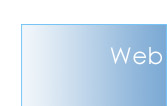HTML in Web Designing
Hyper Text Markup Language abbreviated as HTML is the basic and prevalent markup language for designing web pages. Designing the web pages with the help of HTML does not require any programming skills. Instead it just requires the web page presenting skills. HTML is extremely simple to apply in its basic form. The entire visibility of a page is controlled by the HTML tags.
Tags are nothing but the formatting option provided by the markup language for the designers to format the text, images and other links appearing on the page. Designers familiar with the tags can manage the website without any programming language. The appearance of the text and other multimedia effects that include video clips, sound files and images in the web page must be enclosed within the starting and closing tags.
The tags which are used for designing the layout of the web page may vary according to the browser used. Certain browsers support certain HTML tags and some do not. Accordingly, the output (display) of the webpage will differ significantly. With recent substantial changes and advancements, the markup language has become convenient to design web pages compatible with different browsers.
It should also be noted that not all the tags in HTML have both opening and closing tags. Some tags under the formatting category do not have closing tags. The syntax of the HTML tags begins as <HTML> followed by other tags and then ends with </HTML>. Other than tags which are basic, there is an element which has two properties named attributes and text or the content of the webpage. The attributes can be used to assign a value to an element. The values assigned must be enclosed within quotes for safety reasons.
In HTML, the designing tags are categorized as formatting, aligning, graphics, links and multimedia. Under each category, there are many tags and it is left to the designers to use it according to their need. When handling graphics in HTML, the most common browser supported image extensions gif and jpeg are preferred. The gif and jpeg formats are used while handling solid colours and photographs, respectively. For a neat appearance of the web page <TABLE> tag can enclose all the other formatting tags and the paragraph content. Proper structure of the web page can be ensured by using <TD> and <TD> tags inside <TABLE> tag.
Instead of using HTML tools which would look complex for the beginners, it would be better to start writing HTML codes in the editors such as notepad and one can see the saved file with the extension .html in the browser. XEL Web Design has a professional team of designers who are strong in their basic designing markup HTML and the work of these designers would exceed your expectations.





